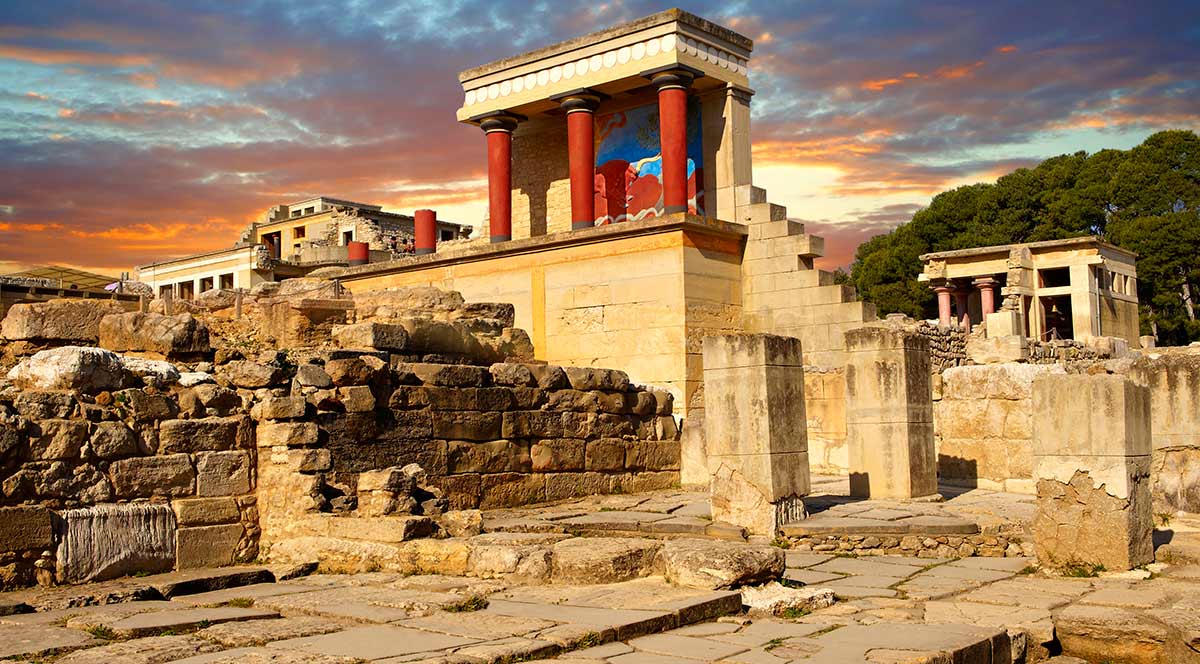
Knossos, or The Labyrinth is the largest Bronze Age archaeological site on Crete and has been called Europe’s oldest city.
Settled as early as the Neolithic period, the name Knossos survives from ancient Greek references to the major city of Crete. The palace of Knossos eventually became the ceremonial and political centre of the Minoan civilization and culture. The palace was abandoned at some unknown time at the end of the Late Bronze Age, c. 1,380–1,100 BC. The reason why is unknown, but one of the many disasters that befell the palace is generally put forward.
In the first palace period around 2,000 BC the urban area reached a size of as many as 18,000 people. In its peak the palace and surrounding city boasted a population of 100,000 people shortly after 1700 BC.
The site of Knossos was discovered in 1878 by Minos Kalokairinos. The excavations in Knossos began in 1900 by the English archaeologist Sir Arthur Evans (1851–1941) and his team, and continued for 35 years. Its size far exceeded his original expectations, as did the discovery of two ancient scripts, which he termed Linear A and Linear B, to distinguish their writing from the pictographs also present. From the layering of the palace Evans developed an archaeological concept of the civilization that used it, which he called Minoan, following the pre-existing custom of labelling all objects from the location Minoan.
Since their discovery, the ruins have undergone a history of their own, from excavation by renowned archaeologists, education, and tourism, to occupation as a headquarters by governments warring over the control of the eastern Mediterranean in two world wars. This site history is to be distinguished from the ancient.
The features of the palace depend on the time period. Currently visible is an accumulation of features over several centuries, the latest most dominant. Thus, the palace was never exactly as depicted today. In addition, it has been reconstituted in modern materials. The custom began in an effort to preserve the site from decay and torrential winter rain. After 1922, the chief proprietor, Arthur Evans, intended to recreate a facsimile based on archaeological evidence. The palace is not exactly as it ever was, perhaps in places, not even close, and yet in general, judging from the work put in and the care taken, as well as parallels with other palaces, it probably is a good general facsimile. Opinions range, however, from most skeptical, viewing the palace as pure fantasy based on 1920s architecture and art deco, to most unquestioning, accepting the final judgements of Arthur Evans as most accurate. The mainstream of opinion falls between.
Source: Wikipedia
